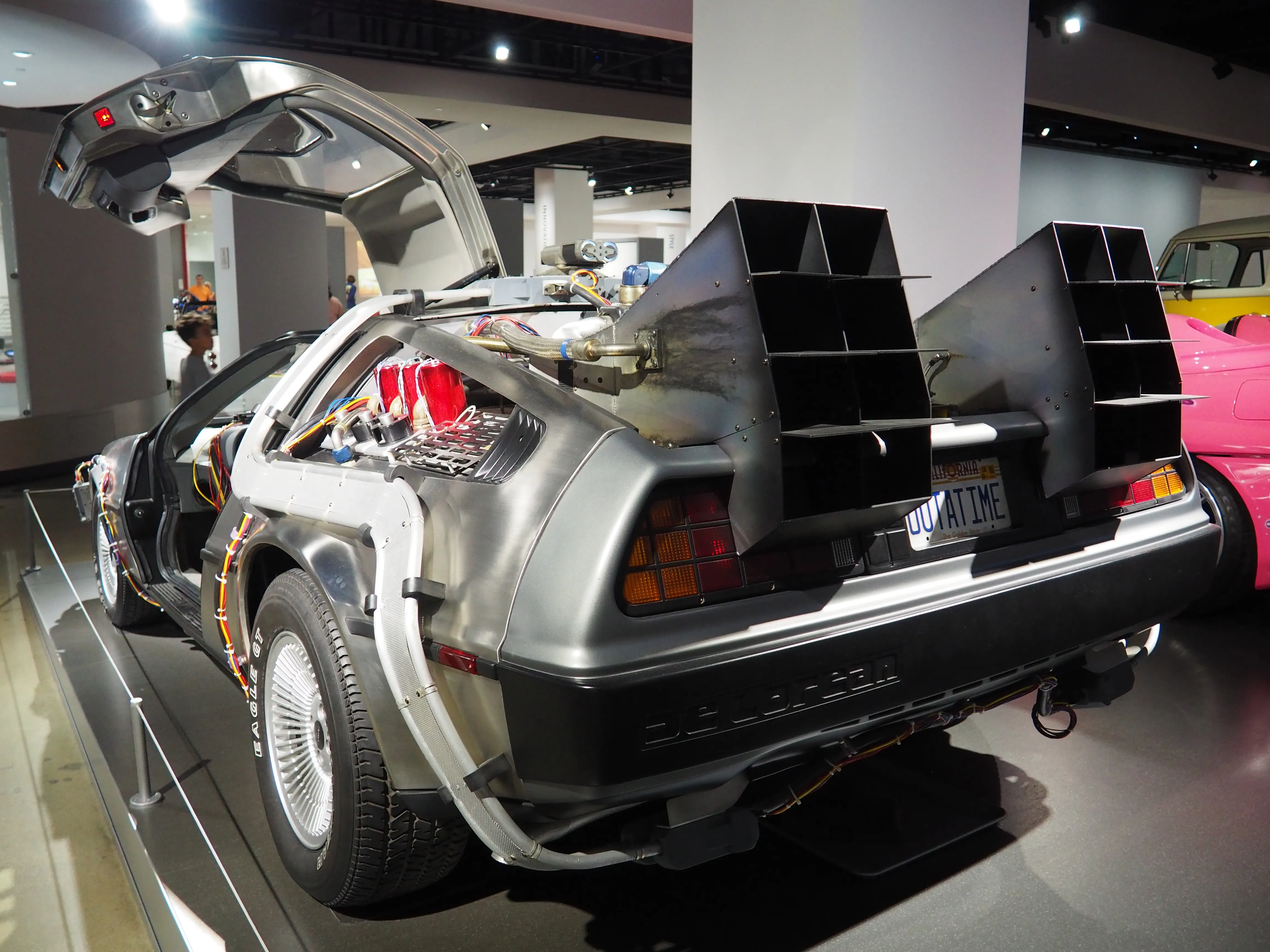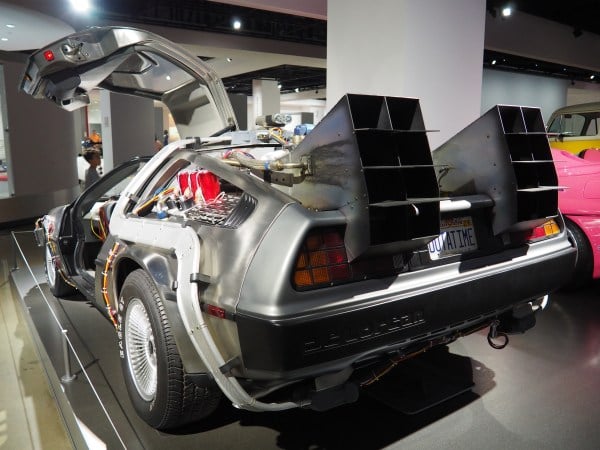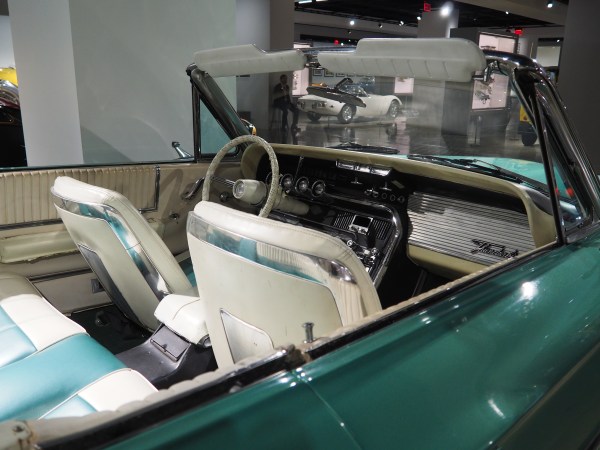If you pass near La Brea Tar Pits or the West Hollywood end of Wilshire Boulevard, you’ll most likely note a lavish red and silver box-shaped building — red on the inside with wavy silver stripes raised across its exterior. The few times I saw it in years past, I assumed it was some kind of bizarre store for Hollywood elite — never did I imagine it was a museum. Namely, it’s a car museum.
Yet upon learning about and entering the Peterson Automotive Museum, it made complete sense. The Petersen’s collection is just as fully-loaded and stylish as the building’s facade. The Petersen Automotive Museum boasts three entire floors filled with cars, motorcycles, regalia, gear and everything remotely automotive or car-related. Signage in the museum reveals its commitment to valuing and promoting the uniqueness and exquisiteness of cars and other vehicles — the most treasured of which are usually valued for their style and demonstrated a certain level of refined status.
It’s certainly a strange message to put forth in such a place, as even those who can afford the $16 admission may certainly not be ones to purchase million-dollar vehicles. Yet wandering the museum, one can’t help but feel a certain kind of awe and amazement at these vehicles. The cars really do show a certain kind of expression, and owners who carefully customize their vehicles clearly have particular senses of taste. Whether this stems from elitism, artistry or a desire to show wealth is beside the point (although still something to consider) — the cars are marvels of technology, inside and out.
The third floor, dedicated to the history of vehicles, has an entire wall of cars from movies — including one of the teal cars used in “Thelma and Louise,” the restored Delorean from the “Back to the Future” franchise, the van from “Little Miss Sunshine” and three Batman vehicles. With replicas of some of the first vehicles — both car and motorcycle — the third floor allows visitors to wander the floor, exploring how cars started as a functional mode of transportation and quickly transformed into a passion for many.
The second floor is devoted to the industry and has a more diverse set of vehicles, including a special exhibit devoted to small, functional cars for children for pleasure and racing. Often virtually indistinguishable scale models of expensive cars, they were often purchased by rich suburban parents for their kids as toys, ones they could drive around and mimic their parents. Yet another special exhibit highlights the rich history of Japanese vehicles, often considered very reliable and pragmatic cars, countering typical American flashiness. One of the most interesting collections is that of the motorcycles, showing a variety of makers who craft unique vehicles of all different designs, levels of complexity, and functions. Many are shiny, sleek and utterly magnetic to the eye — true examples of technology and art combining in a beautiful intersection to create design.
The first floor is currently mostly occupied by a special exhibit devoted to Porsche — including the many iterations of the company’s vehicles over the years, but also the company’s reputation as a designer (a coffeemaker, television, a sky-rise and an unconventional piano are examples of such design feats). The Porsche exhibit became one of the most educational of the exhibits, explaining how the original maker and founder, Ferdinand Porsche, created the design for the car, and all of the company’s cars have never wavered that far from that original shape — one found to be extremely functional and effective. Over the years, racing Porsches grew in flashiness and flair, while everyday Porsches stayed simple yet elegant — a mark of the Porsche name.
For an extra charge, the Petersen also offers 75-minute and 120-minute tours of the Vault — a treasure trove of even more fancy cars including hot rods and Porsches. Even without the Vault, the sheer number of vehicles at the Petersen is almost overwhelming — several car-lovers quickly ran to their favorite vehicles, verbosely explaining their function and makes, while others not as familiar with the technical specifications of each vehicle admired their exteriors and designs. Either way, the museum itself is much more of an experience than simply the sum of its many, many cars — and the cars are truly incredible.
Contact Olivia Popp at oliviapopp ‘at’ stanford.edu.















